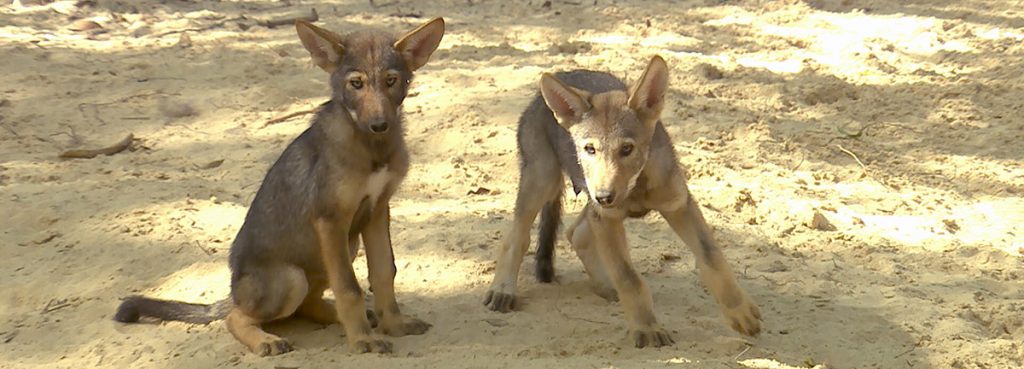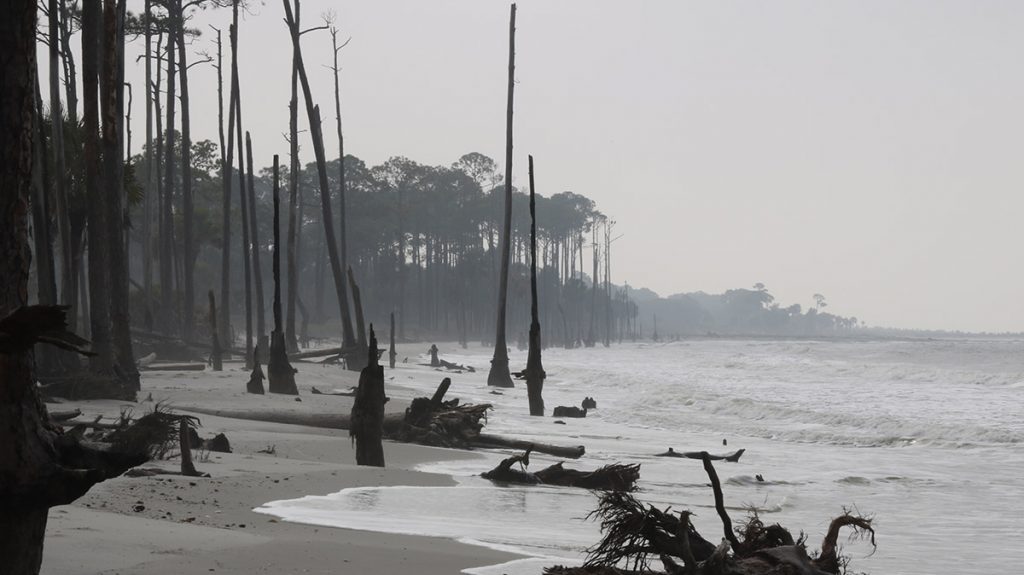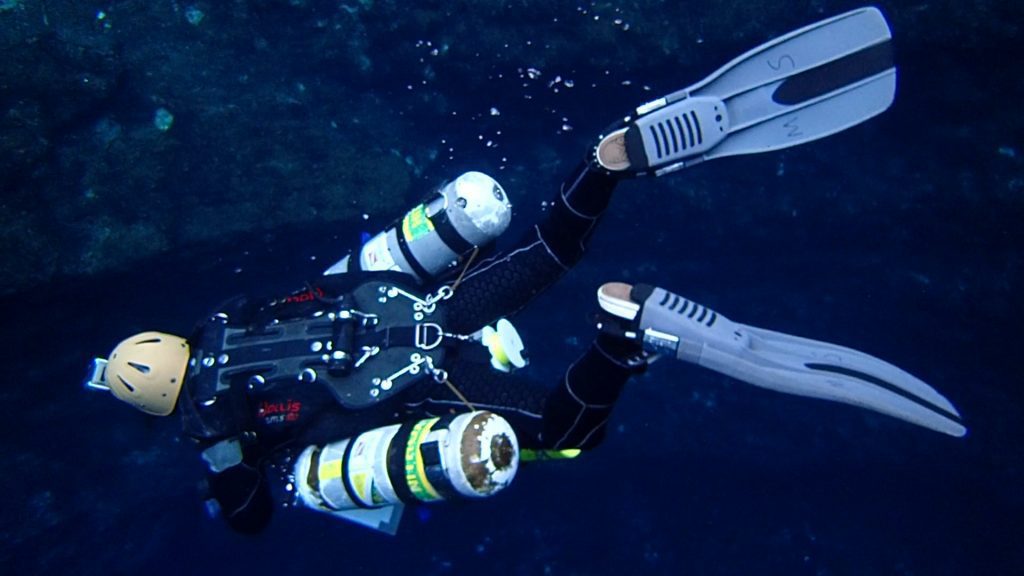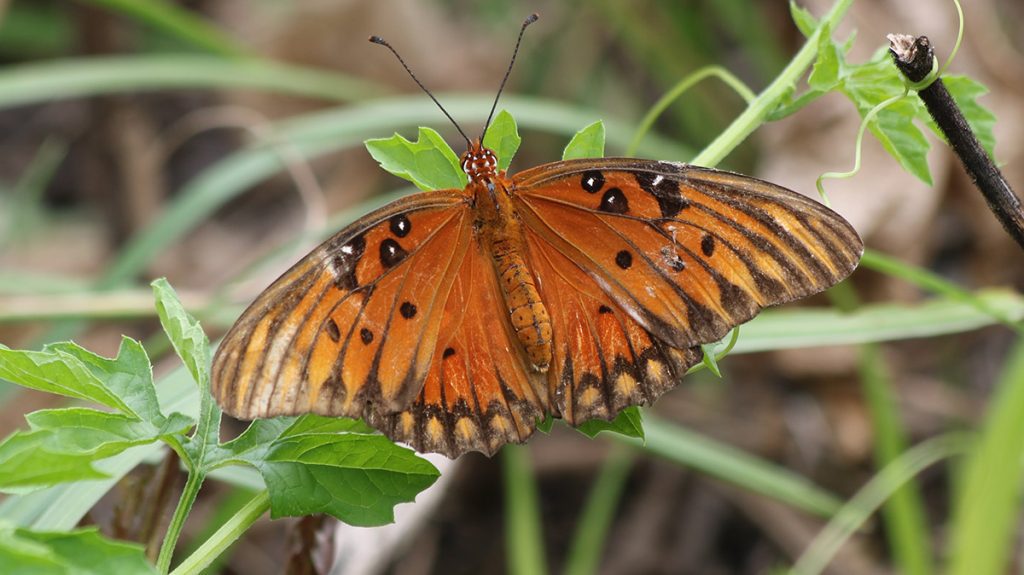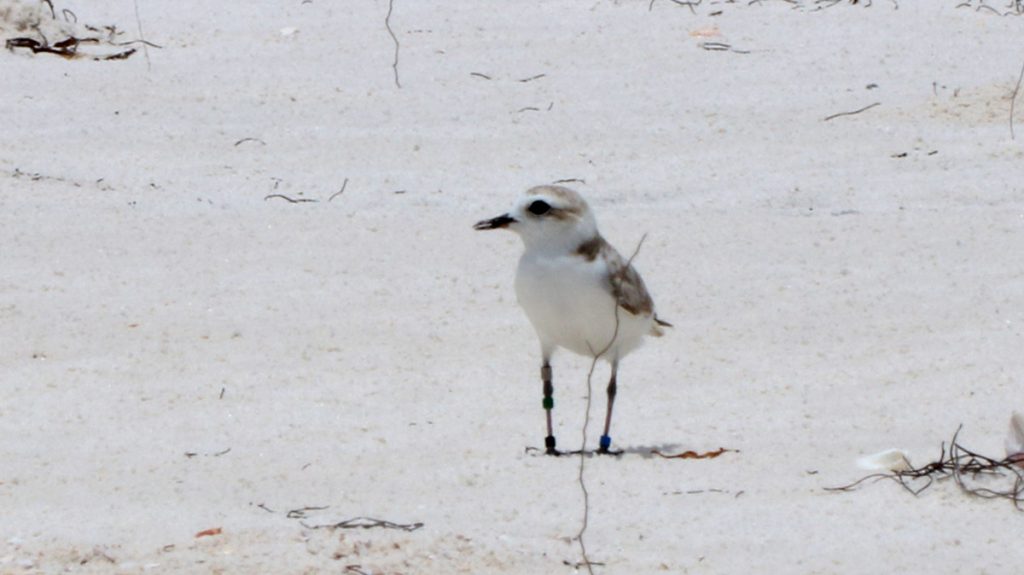These puppies are running! The Tallahassee Museum’s red wolf pups are three months old, and visibly larger than the last time we saw them.
Subscribe to receive more videos and articles about the natural wonders of our area.
Rob Diaz de Villegas WFSU Media
If you’ve been visiting the Tallahassee Museum looking to catch a glimpse of their red wolf pups, you’ve been out of luck. So far, anyway. They’re growing fast, and their behavior is changing as they grow. There is a pattern to my two shoot days with them. After the animal exhibit trails close, they start to poke their heads out. When the animal staff heads out on their cart, the four pups come out and explore.
Animal Curator Mike Jones remarked on their shyness as he accompanied me to the exhibit. “I think they get it from their mother.”
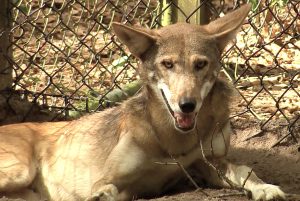
Mother red wolf, enjoying some open space as her growing pups occupy the artificial den at the Tallahassee Museum.
We barely saw mother red wolf on my first visit; she poked her head out for just under ten seconds during my three hour visit. But she’s kind of the unsung star of this second video. The pups, now three months old, were ready to run after a day confined to their little house. As you see, she keeps running them down to tend to them. And then, after less than twenty minutes, she started whining, and herding the pups back in.
The other change you see is that the Museum staff filled in the dens dug by the parents. This keeps the puppies in the house, and in front of its camera. Each of these puppies is valuable within the breeding program, and key to the survival of the species. And so the staff is vigilant.
Tallahassee Museum Red Wolf Pups: a Brief History
If you’ve missed our previous stories, we’ve been following the pups since their mom was pregnant with them. We visited with them, and Mike Jones, in March. Mike gave us an overview of the species and its disappearance from the wild, and the Museum’s role in helping to bring it back from the brink of extinction.
We next visited just over a month ago. The pups had just reached two months. They mostly stayed in dens on the far end of the exhibit, and the boardwalk had a barrier keeping people from getting too close. The Museum was nice enough to let me camp out on the other side of the barrier for a few hours. It was a thrill when they finally came out; each time I schedule a shoot there the staff tells me “You might see them.” So far, so good.
Another story we produced looks at a possible destination for these pups, when they’re older. The Saint Vincent National Wildlife Refuge is an island propagation site in the red wolf breeding program. Here, wolves can get used to living wild, but on an island, where they can be more easily tracked. The island houses a male and female, who, with luck, will become a breeding pair. They or their offspring may end up joining the wild population in North Carolina.
The current St. Vincent pair produced one puppy in 2016.
What else have we got cooking?
It’s been a busy summer for the WFSU Ecology Blog. We’re covering the red wolf pups, of course. They are the newest generation of a highly endangered species. Now extinct in Florida’s wild places, they were once a top predator here.
That isn’t the only segment looking at animals that had once roamed our state. We’ve reconnected with Morgan Smith, a Tallahassee born archeologist working on his PhD from Texas A&M. We revisited his Wacissa River site, and look at excavations he and his crew conducted in Silver Springs. At the Silver Springs site, early Floridians came upon some columbian mammoths. Through Morgan’s careful analysis, both sites should give us a glimpse into the ancient landscape of our area.
We’ve also been heading into various wetland habitats with Dr. Bruce Means. We followed him to the Apalachicola Bluffs and Ravine region, and into the Bradwell Bay Wilderness. There, we found species of salamanders he’s been studying for over fifty years. In a swamp off of the Chipola River, we find a species he and colleagues recently discovered. These little creatures have a lot to tell us about the biodiversity of our area, and the habitats that make north Florida a biodiversity hotspot.
While Dr. Means took us into some remote wild places, there are animals a plenty right here in Tallahassee. On Saturday, the Hairstreak Chapter of the North American Butterfly Association conducted their annual butterfly count. Over sixty species of butterfly have been spotted in Leon County, including some you may never have noticed.
When you stop and look at plants alongside forest trails, or in parks, or in your yard, you’ll notice a wealth of colorful insects.
We’ve also been down to the coast, where Audubon Florida is using volunteers to keep nesting shorebirds safe during the peak beach season. Many of these shorebird species have seen a decline in numbers as they lose habitat, and human activity can have a negative impact on nesting parents.
Those snowy plovers, oyster catchers, least terns, etc., much like the Apalachicola dusky salamander, Durante’s skipper butterfly, and once upon a time, red wolves and columbian mammoths, are part of the rich diversity of life in this state we call our home.

